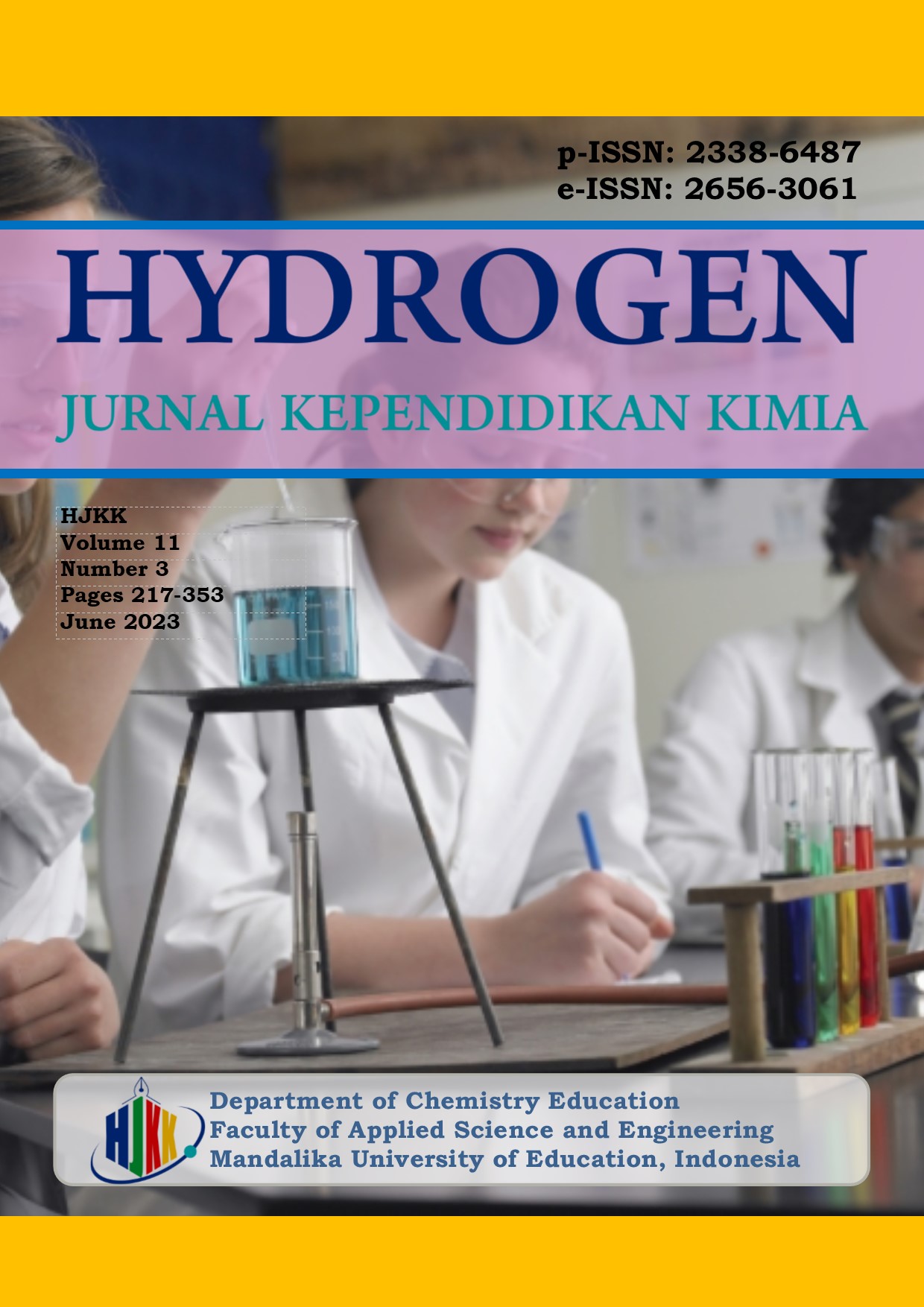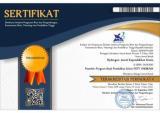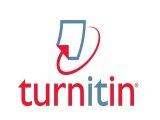Identification of Student Conceptions on the Molecular Structure of Organic Compounds Using Question
DOI:
https://doi.org/10.33394/hjkk.v11i3.8135Keywords:
Conception of Molecular Structure and Question MappingAbstract
The atoms that make up organic molecules are carbon (C), hydrogen (H), oxygen (O), nitrogen (N), phosphorus (P), sulfur (S), and several other elements such as chlorine (Cl), bromine (Br), and iodine (I). The characteristics of the constituent organic molecules are important to study in order to understand the reactions and transformations in the synthesis of organic compounds. The weak conception of students about the characteristics of the constituent elements of organic compounds causes most students to experience difficulties in studying the structure of organic compounds. The purpose of this study was to find out the strengths and weaknesses of students' conceptions in understanding the molecular structure of organic compounds. This research is a quantitative descriptive research. The population of the study was 20 chemistry education students taking the basics of determining the structure of organic compounds. Samples were selected proportionally to the most. The instrument used is a description test designed in the form of a question mapping. The data obtained is then described in tables and graphs. The results showed that most of them were able to determine the types of atoms and bonds formed. Most students have not been able to explain the characteristics of the atoms that make up organic compounds and the subatomic characters that make up the atoms. Technology is needed that can visualize organic molecules at the atomic and subatomic levels to be able to build stronger student conceptions.
References
Abduljabbar, D., & Omar, N. (2015). Exam questions classification based on Bloom’s taxonomy cognitive level using classifiers combination. Journal of Theoretical and Applied Information Technology, 78, 447–455.
Alabugin et al. (2021). Stereoelectronic power of oxygen in control of chemical reactivity: The anomeric effect is not alone—Chemical Society Reviews (RSC Publishing). https://pubs.rsc.org/en/content/articlelanding/2021/cs/d1cs00386k
Alam, A. (2020). What is the “Philosophy of Chemistry Education� Viewing Philosophy behind Educational Ideas in Chemistry from John Dewey’s Lens: The Curriculum and the Entitlement to Knowledge. PalArch’s Journal of Archaeology of Egypt / Egyptology, 17(9), Article 9.
Alt Dorit. (2021). Health management students’ self-regulation and digital concept mapping in online learning environments | SpringerLink. https://link.springer.com/article/10.1186/s12909-021-02542-w
Amin, A., Lubis, M., Alimni, Saepudin, Jaenullah, Kurniawan, D. A., & Lestari, M. (2020). A Study of Mind Mapping in Elementary Islamic School: Effect of Motivation and Conceptual Understanding. Universal Journal of Educational Research, 8(11), 5127–5136. https://doi.org/10.13189/ujer.2020.081112
Aritia and Suyanto. (2019). The Effect of Problem based Learning Model and Concept Map Strategy for Problem Solving and Understanding of the Ecosystem Concept of High School Students—IOPscience. https://iopscience.iop.org/article/10.1088/1742-6596/1233/1/012005/meta
Atar et al. (2019). Design of nickel donor–acceptor dithiolenes for 2nd order nonlinear optics: An experimental and computational study—New Journal of Chemistry (RSC Publishing). https://pubs.rsc.org/en/content/articlelanding/2019/nj/c9nj02976a
Awogbemi et al. (2019). Comparative study of properties and fatty acid composition of some neat vegetable oils and waste cooking oils | International Journal of Low-Carbon Technologies | Oxford Academic. https://academic.oup.com/ijlct/article/14/3/417/5527146
Brooks, A. W., & John, L. K. (2018). The Surprising Power of Questions.
Burrows, N. L., & Mooring, S. R. (2015). Using concept mapping to uncover students’ knowledge structures of chemical bonding concepts. Chemistry Education Research and Practice, 16(1), 53–66. https://doi.org/10.1039/C4RP00180J
Champagne, P. A., Desroches, J., Hamel, J.-D., Vandamme, M., & Paquin, J.-F. (2015). Monofluorination of Organic Compounds: 10 Years of Innovation. Chemical Reviews, 115(17), 9073–9174. https://doi.org/10.1021/cr500706a
Chen et al. (2015). Transition metal-catalyzed C–H bond functionalizations by the use of diverse directing groups—Organic Chemistry Frontiers (RSC Publishing). https://pubs.rsc.org/en/content/articlelanding/2015/qo/c5qo00004a
Cook, A. K., Lidbury, J. A., Creevy, K. E., Heseltine, J. C., Marsilio, S., Catchpole, B., & Whittlestone, K. D. (2020). Multiple-Choice Questions in Small Animal Medicine: An Analysis of Cognitive Level and Structural Reliability, and the Impact of these Characteristics on Student Performance. Journal of Veterinary Medical Education, 47(4), 497–505. https://doi.org/10.3138/jvme.0918-116r
Desmarais. (2012). Mapping question items to skills with non-negative matrix factorization | ACM SIGKDD Explorations Newsletter. https://dl.acm.org/doi/abs/10.1145/2207243.2207248
Doyle et al. (2020). An overview of the qualitative descriptive design within nursing research. https://journals.sagepub.com/doi/abs/10.1177/1744987119880234?journalCode=jrnb
Frenking, G., Tonner, R., Klein, S., Takagi, N., Shimizu, T., Krapp, A., Pandey, K. K., & Parameswaran, P. (2014). New bonding modes of carbon and heavier group 14 atoms Si–Pb. Chemical Society Reviews, 43(14), 5106–5139. https://doi.org/10.1039/C4CS00073K
Gilewski, A., Litvak, M., & Ye, L. (2022). Promoting metacognition through measures of linked concepts with learning objectives in introductory chemistry. Chemistry Education Research and Practice, 23(4), 876–884. https://doi.org/10.1039/D2RP00061J
Gillette and Sanger. (2018). Analysing the distribution of questions in the gas law chapters of secondary and introductory college chemistry textbooks from the United States—Chemistry Education Research and Practice (RSC Publishing). https://pubs.rsc.org/en/content/articlelanding/2014/rp/c4rp00115j
Gyamfi et al. (2019). Natural organic matter-cations complexation and its impact on water treatment: A critical review—ScienceDirect. https://www.sciencedirect.com/science/article/abs/pii/S004313541930452X
Habiddin & Page. (2020). Probing students’ higher order thinking skills using pictorial style questions | Macedonian Journal of Chemistry and Chemical Engineering. https://mjcce.org.mk/index.php/MJCCE/article/view/2133
Hamid, A. (2018). Creative-Critical Thinking Stimulation of Pre Service Teachers by Socratic Questions and Chemical Representation. 1–4. https://doi.org/10.2991/iccite-18.2018.1
Harza, A. E. K. P., Wiji, W., & Mulyani, S. (2021). Potency to overcome misconceptions by using multiple representations on the concept of chemical equilibrium. Journal of Physics: Conference Series, 1806(1), 012197. https://doi.org/10.1088/1742-6596/1806/1/012197
Hearne et al. (2019). Halide-bi-bridged polymers of amide substituted pyridines and -pyrazines: Polymorphism, structures, thermal stability and magnetism—CrystEngComm (RSC Publishing). https://pubs.rsc.org/en/content/articlelanding/2019/ce/c9ce00071b
Held et al. (2017). Covalentâ€Bond Formation via Onâ€Surface Chemistry—Held—2017—Chemistry – A European Journal—Wiley Online Library. https://chemistry-europe.onlinelibrary.wiley.com/doi/abs/10.1002/chem.201604047
Huliadi, H. (2021). Profil Keterampilan Proses Sains Mahasiswa Melalui Praktikum Kimia Organik I. Reflection Journal, 1(2), Article 2. https://doi.org/10.36312/rj.v1i2.653
Jena et al. (2022). Noncovalent interactions in proteins and nucleic acids: Beyond hydrogen bonding and π-stacking—Chemical Society Reviews (RSC Publishing). https://pubs.rsc.org/en/content/articlelanding/2022/cs/d2cs00133k
Johsson et al. (2019). Full article: The threat to climate change mitigation posed by the abundance of fossil fuels. https://www.tandfonline.com/doi/full/10.1080/14693062.2018.1483885
Karmakar et al. (2017). Recent advances on supramolecular isomerism in metal organic frameworks—CrystEngComm (RSC Publishing). https://pubs.rsc.org/en/content/articlelanding/2017/ce/c7ce00756f
Khaeruman, K., Darmatasyah, D., & Hulyadi, H. (2017). The Development Of Chemistry Virtual Laboratory On Colloidal System To Improve Generic Science Skills. Hydrogen: Jurnal Kependidikan Kimia, 5(2), 84–93. https://doi.org/10.33394/hjkk.v5i2.1593
Leggett, L. M. W., & Ball, D. A. (2012). The implication for climate change and peak fossil fuel of the continuation of the current trend in wind and solar energy production. Energy Policy, 41, 610–617. https://doi.org/10.1016/j.enpol.2011.11.022
Li et al. (2020). Characteristics of bioepoxy based on waste cooking oil and lignin and its effects on asphalt binder—ScienceDirect. https://www.sciencedirect.com/science/article/abs/pii/S0950061820309314
Lin et al. (2019). Multifunctional porous hydrogen-bonded organic framework materials—Chemical Society Reviews (RSC Publishing). https://pubs.rsc.org/en/content/articlelanding/2019/cs/c8cs00155c
Lusiana, L. (2021). Analyzing Higher Order Thinking Skills of Reading Comprehension Questions in a School Examination (US) [BachelorThesis, Jakarta: FITK UIN Syarif Hidayatullah Jakarta]. https://repository.uinjkt.ac.id/dspace/handle/123456789/63916
Mento et al. (1988). Mind mapping in executive education: Applications and outcomes | Emerald Insight. https://www.emerald.com/insight/content/doi/10.1108/02621719910265577/full/html
Muanruksa. (2020). Combination of fatty acids extraction and enzymatic esterification for biodiesel production using sludge palm oil as a low-cost substrate. Renewable Energy, 146, 901–906. https://doi.org/10.1016/j.renene.2019.07.027
Nilsson, T., & Niedderer, H. (2014). Undergraduate students’ conceptions of enthalpy, enthalpy change and related concepts. Chemistry Education Research and Practice, 15(3), 336–353. https://doi.org/10.1039/C2RP20135F
Perdana, R., Jumadi, J., Rosana, D., & Riwayani, R. (2020). THE ONLINE LABORATORY SIMULATION WITH CONCEPT MAPPING AND PROBLEM BASED LEARNING (OLS-CMPBL): IS IT EFFECTIVE IN IMPROVING STUDENTS’ DIGITAL LITERACY SKILLS? Jurnal Cakrawala Pendidikan, 39(2), Article 2. https://doi.org/10.21831/cp.v39i2.31491
Pratt, J. M., & Yezierski, E. J. (2018). A novel qualitative method to improve access, elicitation, and sample diversification for enhanced transferability applied to studying chemistry outreach. Chemistry Education Research and Practice, 19(2), 410–430. https://doi.org/10.1039/C7RP00200A
Sabzehmeidani et al. (2021). Carbon based materials: A review of adsorbents for inorganic and organic compounds—Materials Advances (RSC Publishing) DOI:10.1039/D0MA00087F. https://pubs.rsc.org/en/content/articlehtml/2021/ma/d0ma00087f
Su, L., Feng, Y., Wei, K., Xu, X., Liu, R., & Chen, G. (2021). Carbohydrate-Based Macromolecular Biomaterials. Chemical Reviews, 121(18), 10950–11029. https://doi.org/10.1021/acs.chemrev.0c01338
Sun et al. (2012). Low band gap polycyclic hydrocarbons: From closed-shell near infrared dyes and semiconductors to open-shell radicals—Chemical Society Reviews (RSC Publishing). https://pubs.rsc.org/en/content/articlelanding/2012/cs/c2cs35211g
Zeng et al. (2015). Pro-aromatic and anti-aromatic π-conjugated molecules: An irresistible wish to be diradicals—Chemical Society Reviews (RSC Publishing). https://pubs.rsc.org/en/content/articlelanding/2015/cs/c5cs00051c
Zeng et al. (2021). Excited state character of Cibalackrot-type compounds interpreted in terms of Hückel-aromaticity: A rationale for singlet fission chromophore design—Chemical Science (RSC Publishing). https://pubs.rsc.org/en/content/articlelanding/2021/sc/d1sc00382h
Zhang et al. (2021). Macromolecular Characterization of Compound Selectivity for Oxidation and Oxidative Alterations of Dissolved Organic Matter by Manganese Oxide | Environmental Science & Technology. https://pubs.acs.org/doi/abs/10.1021/acs.est.1c01283
Downloads
Published
How to Cite
Issue
Section
Citation Check
License
License and Publishing Agreement
In submitting the manuscript to the journal, the authors certify that:
- They are authorized by their co-authors to enter into these arrangements.
- The work described has not been formally published before, except in the form of an abstract or as part of a published lecture, review, thesis, or overlay journal.
- That it is not under consideration for publication elsewhere,
- That its publication has been approved by all the author(s) and by the responsible authorities – tacitly or explicitly – of the institutes where the work has been carried out.
- They secure the right to reproduce any material that has already been published or copyrighted elsewhere.
- They agree to the following license and publishing agreement.
Copyright
Authors who publish with Hydrogen: Jurnal Kependidikan Kimia agree to the following terms:
- Authors retain copyright and grant the journal right of first publication with the work simultaneously licensed under a Creative Commons Attribution License (CC BY-SA 4.0) that allows others to share the work with an acknowledgment of the work's authorship and initial publication in this journal.Â
- Authors are able to enter into separate, additional contractual arrangements for the non-exclusive distribution of the journal's published version of the work (e.g., post it to an institutional repository or publish it in a book), with an acknowledgment of its initial publication in this journal.
- Authors are permitted and encouraged to post their work online (e.g., in institutional repositories or on their website) prior to and during the submission process, as it can lead to productive exchanges, as well as earlier and greater citation of published work.
Licensing for Data Publication
Hydrogen: Jurnal Kependidikan Kimia uses a variety of waivers and licenses, that are specifically designed for and appropriate for the treatment of data: Open Data Commons Attribution License, http://www.opendatacommons.org/licenses/by/1.0/ (default) Other data publishing licenses may be allowed as exceptions (subject to approval by the editor on a case-by-case basis) and should be justified with a written statement from the author, which will be published with the article.









